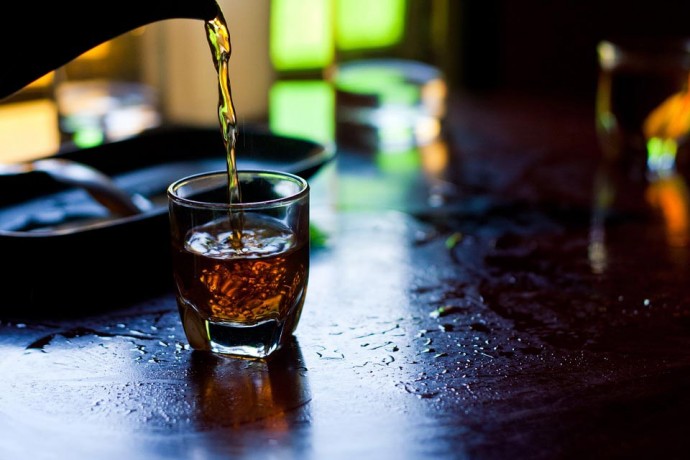When we think of tea here in the States, we often think of demure English women hosting elaborate tea parties with fine china and diminutive cakes. But it’s mere happenstance that the English even had a drink to adopt as their own; the potentially-mythical Chinese Emperor Shen Nung sat below a tree in 2737 BC, sipping boiling water, when leaves from a nearby tree fell into his cup. He returned to his people and extolled the virtues of the exhilarating beverage that resulted, and over the following centuries it became a staple of Asian diets. From there, it spread to the Middle East and Europe, and has most recently settled into snazzy bars the world over in the form of tea cocktails.
Much like alcohol, tea has long been a vehicle for bringing people together. From those early days around the fire in ancient China to the ritual of tea time in the UK, its role in social gatherings has always been pivotal. In times of temperance and prohibition, it was the drink of choice for teetotalers, and conversely, teacups were the vehicle of choice for those wishing to conceal their rebellious tipples. Today, cocktail bars and mixologists are riffing on the historical uses of tea in their creations as a further act of experimentation and camaraderie.
Tea Cocktails Through the Ages
English Milk Punch is one of the oldest tea-based cocktails, dating back to the mid-18th century and most recently regaining serious popularity at Faith and Flower, a Los Angeles restaurant where head bartender Michael Lay spends his days producing gallons of the drink. The process is truly a labor of love, but worth all the attention it has received after a Cocktail of the Year nod in 2014. The drink, which takes three days to make, incorporates green tea and a milk wash—though the final product is, thanks to clarification of the milk, as clear as the rocks glass in which it’s served.
On the East Coast, our nostalgic tendencies have kept The Back Room—a true speakeasy on New York’s Lower East Side—open since Prohibition. You can only access the place by stepping down a flight of stairs, walking through a dodgy alleyway, and up another flight into a dimly-lit and typically packed bar. There are no special codes or handshakes required for entry, but once inside you’ll be transported back to a time when tolerance for alcohol consumption was nil and anti-Prohibitionists sipped their booze with a bit more discretion. Classic cocktails and revolving specialty drinks are served in white teacups to evoke that air of secrecy and illicit behavior.
From the Arnold Palmer to Matcha
Also in Lower Manhattan are the creations of Dave Arnold, OG mixologist and proprietor of Booker & Dax (alongside Momofuku Chef David Chang, Founder and President of the Museum of Food and Drink and well-known tinkerer of classic drinks). In his debut book, Liquid Intelligence: The Art and Science of the Perfect Cocktail, Arnold does what we’ve come to love him for—upping the ante on cocktail classics by breaking them down in his laboratory, and reshaping our thinking around beloved drinks.
Several of the recipes in his book hack tea-based drinks, like the Arnold Palmer, named for the famed golfer who first popularized the refreshing iced tea and lemonade combo. He dives into the science of tea’s acidity and why it’s often paired with milk, and takes us through a Bill Nye-esque experiment involving centrifuges, curdled milk, and spirit-washing to give us the tools for an at-home, smooth, boozy Arnold Palmer.
It doesn’t stop with classic herbal and black teas, though. Matcha, a powdered Japanese green tea which has recently skyrocketed in popularity in American coffee and tea shops, is now making its way into our cocktails. Pouring Ribbons, an East Village bar known for incorporating tea into their drinks (among other things), recently added the Way of the Warrior to their menu. Described as more refreshing than spirituous and more comforting than adventurous, the drink uses matcha alongside rum, pineapple, vanilla, and coconut to create the perfect homage to its Japanese origins, where ground teas were first introduced in the 12th century.
Such is the whacky, woven history of this caffeinated drink in our culture of libations. Although it feels like tea is just starting to have its moment in the cocktail scene, it’s long been present in what we drink—and perhaps more importantly, in the community and camaraderie that surrounds a shared beverage.



